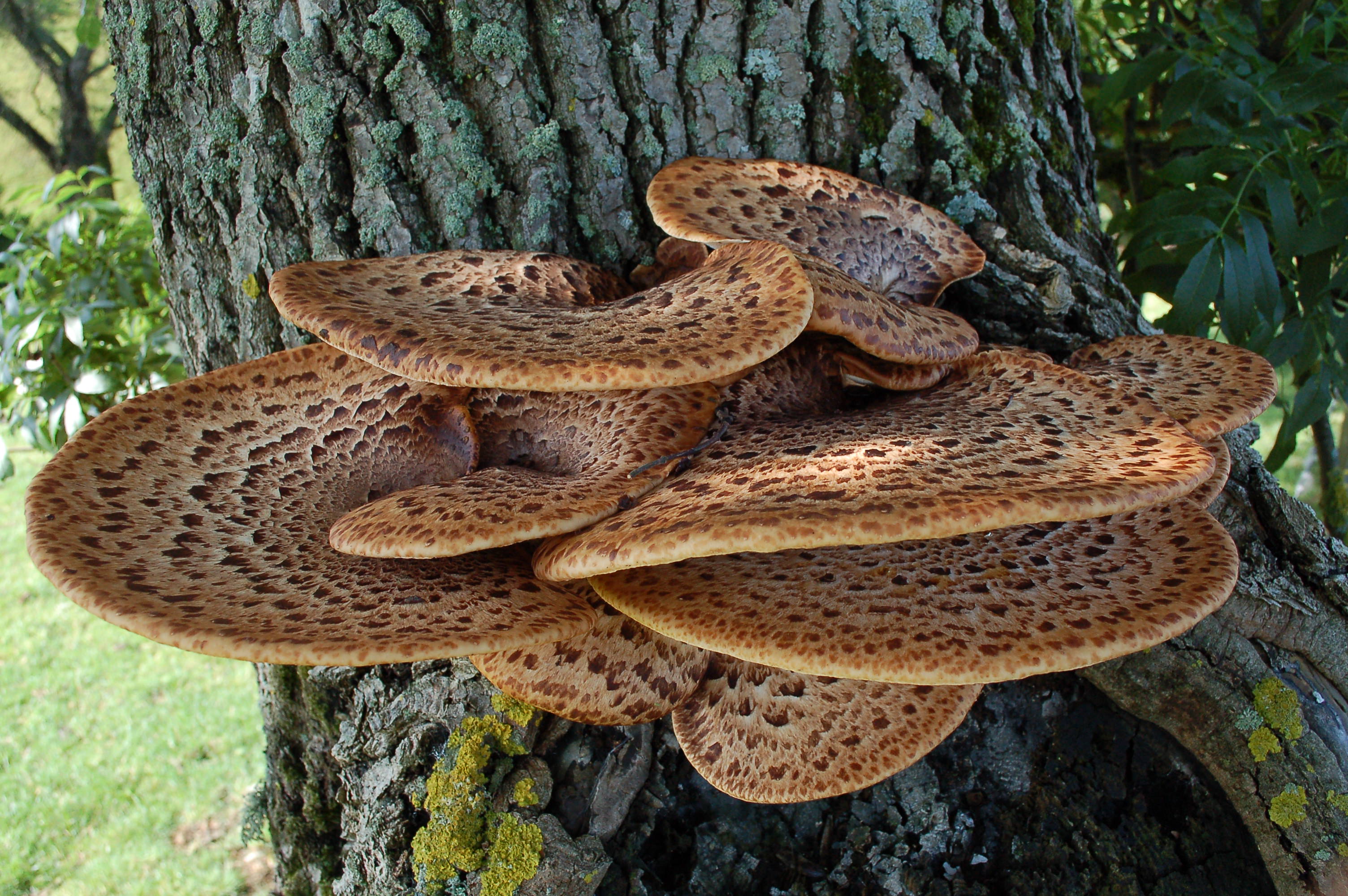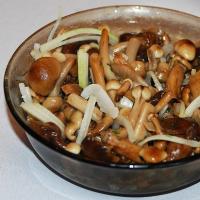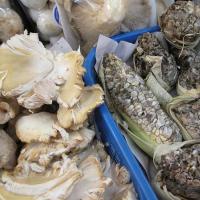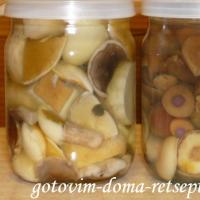Edible, inedible and poisonous mushrooms growing on a tree
The ability of mushrooms to interact with trees is a unique phenomenon. Most often, symbiosis occurs with the root system of plants, forming mycorrhiza, which in translation into Russian means mushroom root.
Symbiosis promotes the production of compounds that protect the tree from pathogenic organisms. It has been established that thanks to the cap mushrooms that settled at the base of the tree, they stop getting sick or do not become infected in the future.
- honey mushrooms;
- real chanterelles;
- sawflies;
- flakes;
- mushrooms;
- tinder fungi.
Depending on the characteristics of the tree, certain types of mushrooms settle on them. If you cut down a tree, then the mushrooms growing at its base will also disappear.
How to grow an oyster mushroom on a tree (video)
For example, a tinder fungus can live on a tree for more than one year, killing it. Then, after the death of the plant, he lives on a fallen tree until it is completely processed.

A tinder fungus can live on a tree for more than one year, killing it
Edible species of mushrooms growing on trees
A small number of edible tree mushrooms are known and are well known among mushroom pickers.
Grifola curly
Grifola is characterized by rapid growth and voluminous fruiting bodies, the weight of which reaches 7 kg. Since the plant is very sensitive to separation from the stem, careless harvesting will result in no fruiting for several years. In view of this feature, the mushroom is listed in the Red Book.
This population has a variety of colors, the spectrum of which varies from pale green to silvery pink, depending on the amount of sunlight. The bottom of the cap and the top of the stem have a finely tubular spore-bearing layer. It is noteworthy that the fungus is not infected by pests.

Grifola curly
Sulfur-yellow tinder fungus, or chicken fungus
The habitat of the fungus, similar to red-hot lava, are areas with mild climatic conditions. The tinder fungus feeds on the wood of dead trees.. Being detrimental to the host, the fungus benefits humans. Its value lies not only in dietary qualities, but also in taste, therefore it is actively used in fungotherapy and cooking.
The pulp of the fungus is loose-fleshy, forming fused fan-shaped hats that have a common base. For young individuals, smooth edges are characteristic, for older ones - wavy. The caps are orange with a touch of pink, which fades with age, turning into a dirty ocher. The sizes of individuals are able to grow up to 40 cm, gaining in weight up to 10 kg. On young specimens, yellowish droplets stand out, and the body itself is covered with a light cream fluff.

Sulfur-yellow tinder fungus, or chicken fungus
Oyster mushroom
Occurs from late spring to mid-autumn. Ra stet in groups on fallen deciduous trees, windfalls and stumps. The size of the depressed funnel-shaped cap with wavy edges varies from 4 to 15 cm. Its color changes depending on the weather: from grayish to pale yellow. The surface is smooth or matte. The rounded leg has a length of about 5 cm and a diameter of up to 1 cm.
The flesh of the body of a young oyster mushroom is fleshy and white, which, as it grows older, hardens and loses its taste. It has a slightly pronounced floury odor. In cooking, mushrooms are used in salted, fried, pickled and boiled form.

Oyster mushroom
Winter honey agaric
This population is found in central Russia in the last months of autumn. Since he is not afraid of frost, it occurs even in early December. The culture is suitable for salting, frying, boiling, pickling and drying. Due to its antiviral and antitumor properties, it has been widely used in use.
The population pours out on fallen trees, comes across even in hollows. The cap grows up to 9 cm in diameter, has a convex shape at the beginning of its life, which straightens out over time, becoming flat. Its color is distinguished by the saturation of the yellow pigment.. Mushrooms are pale yellow, rusty yellow or golden honey, often covered with mucus.
The fleshy flesh of a yellowish or creamy hue is characterized by a pleasant mushroom smell. Due to the fact that the thin leg is hard, it is not used. Therefore, when harvesting mushrooms, only hats are collected.

Winter honey agaric
tiger sawfly
The fungus, which causes white rot on dead wood, prefers to settle in damp and shady places. On healthy plants, the sawfly does not appear. The composition of the pulp includes protein in large quantities. But as old bodies harden, they become unusable.
Juveniles have a convex cap, which becomes funnel-shaped with a downwardly curved edge during growth. The surface of the cap is dry to the touch. The color of the entire fruiting body is off-white with dark brown scales.
How to collect tinder fungi (video)
Poisonous and inedible types of mushrooms on a tree
- ishnoderma resinous, having a round shape and red-brown color;
- astringent postia, characterized by a white tint and various shapes: from round to triangular;
- fluffy trametes with a furrowed hat of a grayish tint;
- piptoporus oak brown color with a velvety surface and a rounded hat;
- southern ganoderma with a stalk tightly adherent to the trunk.

Ischnoderma resinous
Influence of tree fungus on the development of walnut and fruit trees
Usually trees become infected with spores during the warm period of time, which settle on damaged areas of the bark. Then, germinating, they form a mycelium penetrating into the wood. Developing over several years, the mycelium negatively affects the growth of the tree, slowing it down. Hollows may appear in the trunk, branches and roots may die. During the ripening period, spores are carried by the wind to neighboring plants.
If damage is found on the bark, it must be repaired with a special garden pitch. Mushroom pests should be cut and burned.
Some people specifically grow tree mushrooms for food use. For example, oyster mushrooms grow well on hardwoods: apple, aspen, birch, walnut and others. The harder the tree, the longer the stump will last. Therefore, it is recommended to give preference to walnut and poplar stumps.



